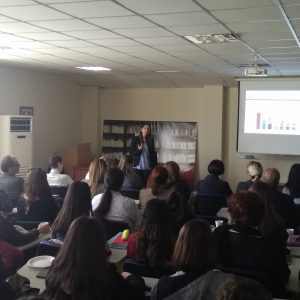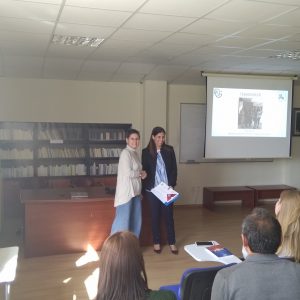Faculty Seminars – 7
Faculty Seminars – 7 (12.03.2020 Thursday)
15:00–17:30: Prof. Dr. Hülya Ayar Kayalı – Production and Characterization of Therapeutic Monoclonal Antibody
Abstract: In parallel with scientific discoveries in molecular biology and genome science, and technological advances in bioengineering and bioinformatics, biotechnology has become a globally critical technology and concrete data has been obtained that will trigger global bioeconomics in the 2030s. Biotechnology has become an indispensable technology especially for the protection of human health, treatment of diseases, innovation and development of qualified industrial products. Drugs with protein structure produced by modern biotechnological methods are called biopharmaceutical products.
In recent years, the rate of new drugs licensed in the field of biopharmaceuticals has been steadily increasing, and many of the first generation biopharmaceuticals, which have grown twice as much as conventional drugs in the global market over the last 30 years, will have their patents expired by 2020. For this reason, there has been great interest in the production of biosimilars around the world that have proven to be the same efficacy, reliability and quality as non-innovative reference drugs. In the production process of biopharmaceuticals which are not possible to produce one-to-one similar to chemical drugs, it has great importance to design experiments using multiple parameters such as vector design, appropriate cell line, upstream and downstream processes. Antibodies are large and heterogeneous biological molecules consisting of multiple subunits, and thousands of variable combinations can be present even for a single mAb. Any small changes in the structure of the antibodies can greatly affect drug activity, stability, and immunological reaction potential. Therefore, for the release of the produced mAbs as pharmaceuticals, it is necessary to meet the licensing requirements by applying analytical methods in the ICH Q6B and EMA monographs. In analytical characterization, in addition to analysis of primary, secondary and tertiary protein structures of the monoclonal antibody, intact mass analysis, peptide mapping, amino acid composition, analysis of glycosylation profile, N-terminal and C-terminal structures, charge heterogeneity, and oxidized forms should also be performed. Furthermore, as well as chromatographic and electrophoretic techniques that determine the level of impurities, it is necessary to identify host cell protein and protein A impurities, host cell and vector-derived DNA impurities. The efficacy of monoclonal antibodies produced by biological activity analysis should be determined.
Photographs:




